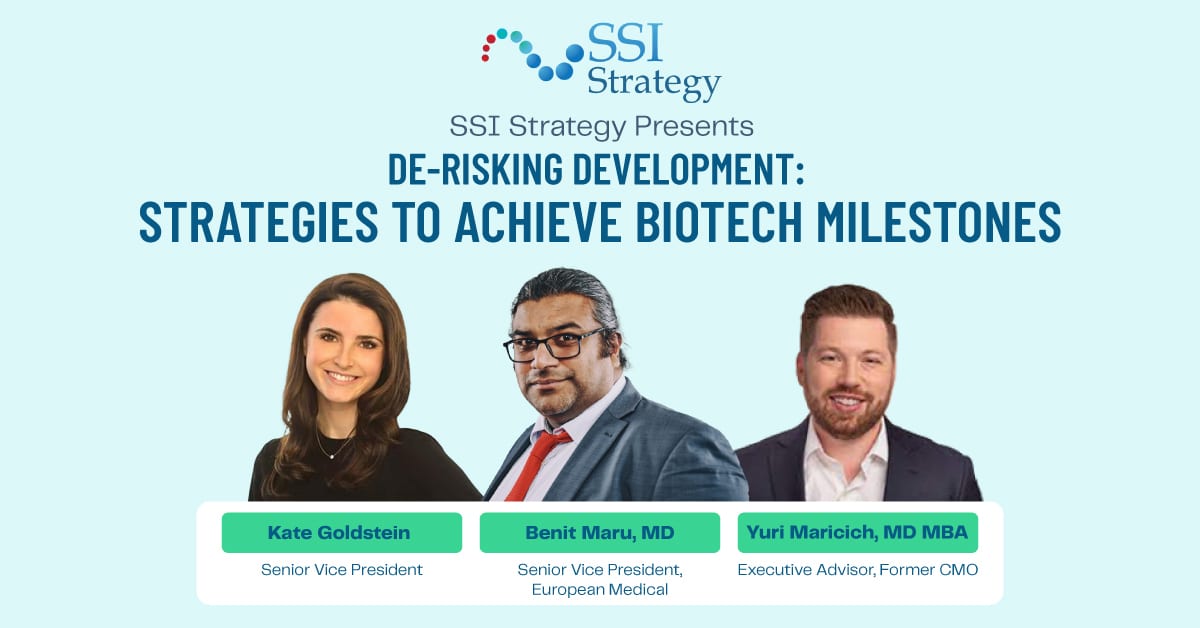Welcome to this week’s Emerging Biotech Leader recap. In our previous Episodes, we touched on the topic of careers and what to know about the role of Medical Affairs. In doing so, we uncovered two key trends relevant to career progression within that function: working collaboratively/cross-functionally and utilizing your network.
As it turns out, these two themes are also the basis for a thriving career as a Chief Medical Officer (CMO), a position that has continued to see increased demand. If you’ve been examining what’s next for you as a clinician, or you’re new to the CMO role, this episode will review what it takes to be a CMO, how you can make the transition from clinical practice to being a CMO, and—true to our show’s description–the pitfalls you should avoid along the way.
Kim and Ramin are joined by Dr. Christopher Morabito, Chief Medical Officer of Astria Therapeutics. Chris’s background provides the perfect foundation to truly understand what CMO involvement is like, be it across Big Pharma or in an emerging biotech. As is often the case on our show, when we bring these industry perspectives together, you’ll hear that CMO responsibilities and functions will vary depending on the size, scope, and stage of a biotech company.
Listen along and enjoy the actionable takeaways that our hosts and Chris provide.
On What Inspired His Own CMO Path + Pursuit
Chris was junior faculty in neonatology at UCSF, before becoming the Chief of Neonatology at Lehigh Valley Health Network, where he worked for about 5 and a half years. Here’s how he went from these two roles to working at Merck.
“I practice neonatology. During my fellowship training, I spent a lot of time at the bench looking at cardiovascular development, which was very fulfilling. However, I realized quickly that it takes a lot of grant writing time to be successful, and I didn’t have that kind of patience.
“During that time, I had some amazing, fulfilling events and activities in my professional life and my personal life. Everything was great. But something was missing, and it took me a few years to figure out what that was. It turned out, I believe, now, in retrospect, that it was this desire to do more for larger populations of patients.”
Once that lightbulb went off, Chris got further clarity on “doing something more for the community, broadly defined,” so he started to look at roles on the industry side. He was VP of Medical first for a few years for a medical communications and strategy company, then went on to work for Merck as clinical monitor (clinical research physician) working on early and late stage development of cardiovascular disease.
Chris is one to practice what he teaches, it took him 12 years and a few diff hats to land a CMO title. Prior to that, he also held the positions of Sanofi and Takeda as a global program lead, head of Portfolio Strategy, head of R&D Integration after a major acquisition, then Head, Research and Development, Plasma Derived Therapies reinforcing the value of working cross-functionally.
What Chris offered in response was a level-set to define what a CMO does regardless of company size: “The CMO is the role that’s responsible for linking the target profile of a drug, or drugs, to the medical community with medical community defined as health care providers (those who treat patients) and patients and their caregivers combined.”
As you go through your career, as hard as it is, maintain relationships. They don’t have to be people that you talk with on a regular basis, but you should at least know them, connect on LinkedIn with them, call them, text them every once in a while, maintain a personal relationship….develop a virtual Rolodex so that when you do need somebody who has special specialty expertise in pediatric investigational plans for a rare disease, you could pick up the phone literally and call that person and say, ‘Listen, can we tap into your expertise for this? Or who do you know that we could tap into for this expertise?’”
Also, just because the CMO role is externally facing doesn’t mean introverts should shy away from it. Chris himself identifies as an introvert, which totally surprised Kim….but may provide reassurance if you can relate.
Much like learning to be more of a team player, Chris provides encouragement that you can also learn how to lean into the external nature of the CMO role through exposure, preparation, and experience. It’s also key to remember you will have to deliver both good news and bad news.
Rounding out the variety of stakeholders a CMO may interact with, Ramin shares an article from McKinsey as a resource for our listeners: “Is Your CMO’s Role Evolving Fast Enough?” The long and short of it is: one of the chapters covers reporting structure and how it varies from org to org. Ramin has seen companies that have the CMO report to the president of R&D, while others report directly to the CEO.



